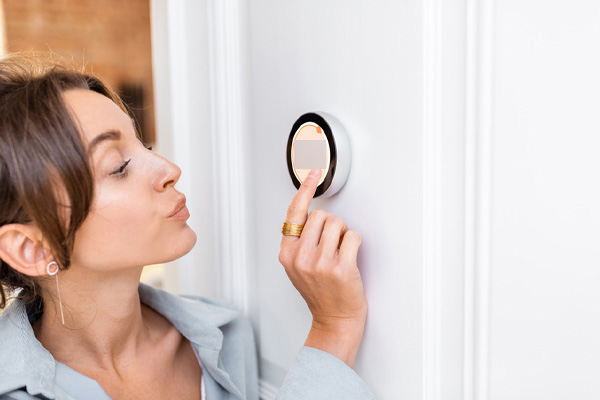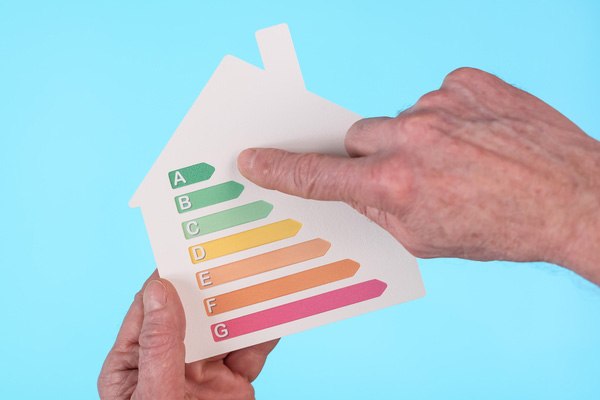Thermostat Setback: Will Turning Back Your Thermostat Give Your Wallet Some Breathing Room?

The HVAC thermostat plays a pivotal role in the quest for energy-efficient HVAC systems. These unassuming devices hold the power to finely tune indoor comfort while significantly impacting energy consumption. Doing a thermostat setback is a simple yet effective strategy to optimize energy usage. A set back thermostat offers substantial financial and environmental benefits by allowing temperature adjustments during unoccupied or sleeping hours. This article delves into the financial and environmental advantages of implementing a thermostat setback, a smart choice for your wallet and the planet.
Understanding The Thermostat Setback
Contents
Thermostat setback, often referred to as temperature setback, is a strategy where you intentionally lower (or rise, in the case of cooling) the temperature setting on your thermostat during specific periods to conserve energy. This is typically done during times when the building is unoccupied, or the occupants are asleep.
Thermostat setback can be achieved with various types of thermostats, including:
- Manual Thermostats: Require users to adjust the temperature settings manually.
- Programmable Thermostats: Allow users to schedule temperature changes in advance.
- Smart Thermostats: Has the ability to learn your schedule and adjust settings remotely via smartphone apps.
Thermostat setback works by reducing the workload of your heating or cooling system during times when it is not needed as much. For example, during the winter, you can set your thermostat to automatically lower the temperature when you are at work and raise it just before you return home. This prevents the system from running at full capacity when no one is around.
Thermostat setback provides many benefits, including reduced energy usage, lower utility bills, and a smaller carbon footprint. It is an energy-efficient practice that maintains your comfort when needed and conserves energy when it is not. This contributes to both cost savings and environmental sustainability.
Energy Consumption and Cost Savings
The temperature setting on your thermostat directly impacts the energy consumption of your HVAC system. The higher the thermostat setting during the winter or the lower it is set during the summer, the more energy your HVAC system consumes to maintain that temperature.
The potential cost savings from using thermostat setbacks can vary depending on factors like your local climate, the efficiency of your HVAC system, and the duration of setback periods. However, studies show that homeowners can save up to 10% on HVAC costs by lowering (or raising) the thermostat by 7 to 10 degrees Fahrenheit for 8 hours a day.
Real-life examples of energy savings abound. For instance, a homeowner who lowers the thermostat before leaving for work and again before bedtime can significantly reduce their heating costs over time. These savings translate into lower utility bills and a positive impact on the household budget.
In addition to cost savings, reducing energy consumption through thermostat setback has clear environmental benefits. It means less energy is generated, reducing carbon emissions associated with electricity or gas production. By using less energy, you can contribute to a much smaller carbon footprint and a more sustainable environment.
Choosing the Right Thermostat
When selecting a thermostat for your home, you have several options to consider. Manual thermostats are the most basic, allowing you to set a constant temperature manually. Programmable thermostats provide the ability to set different temperatures for various times of the day. It allows for energy-efficient setback periods. Smart thermostats take it a step further by adapting to your preferences and allowing remote control via smartphone apps.
Several factors should influence your choice when selecting the right thermostat for your home. Consider your lifestyle and schedule, as well as your heating and cooling needs. Think about the degree of flexibility you want in setting temperature schedules. Cost, ease of use, and compatibility with your HVAC system are also essential considerations.
Different thermostats may require varying degrees of installation expertise. Some are easy DIY projects, while others may need professional installation. Make sure your chosen thermostat is compatible with your HVAC system. Smart thermostats may require Wi-Fi connectivity and a compatible app for full functionality. Make sure your home meets these requirements.
Setting and Programming Thermostats

When programming setback temperatures, it is crucial to strike a good balance between energy cost savings and comfort. For heating, set the setback temperature to a few degrees cooler than your usual comfort level. For cooling, set it back a few degrees warmer. Avoid extreme setbacks, as they may lead to longer recovery times, reducing efficiency gains.
Plan your setback schedules around your daily routine. For example, lower the heat or raise the cooling during work hours or when you are asleep. Most programmable and smart thermostats offer multiple time slots, allowing you to fine-tune your schedule.
To maximize savings, make your setbacks consistent. Gradual setbacks, rather than abrupt changes, are easier on your HVAC system. Regular maintenance ensures that your system can handle setbacks efficiently.
Many believe it takes more energy to reheat or cool a space than to maintain a constant temperature. This is a misconception. Studies and real-world results consistently demonstrate the energy and cost savings associated with thermostat setbacks.
Monitoring and Adjusting
Periodically check your energy bills to gauge the impact of your setback settings. Analyze trends and make adjustments if needed. If you are using a smart thermostat, it may provide detailed usage reports.
Remember to adjust your setback settings as the seasons change. In colder months, you may want to set the heating setback lower. In warmer months, increase the cooling setback temperature.
Smart thermostats often come with remote control and monitoring features. These allow you to adjust settings from your smartphone and receive insights into your energy usage. It makes it easier to optimize your setback strategy.
If you encounter any issues with your thermostat or setback settings, consult the user manual or contact the manufacturer for assistance. Common issues include:
- Programming errors
- Wi-Fi connectivity problems
Energy-Efficient Heating and Cooling Tips

Regular maintenance ensures your HVAC system operates efficiently. To keep your system running smoothly, do the following:
- Change air filters regularly.
- Clean ducts or vents.
- Schedule annual inspections.
Identify and seal gaps around windows, doors, and other openings. Proper insulation in attics, walls, and floors helps maintain a consistent indoor temperature.
Installing energy-efficient windows and doors reduces heat transfer, allowing your HVAC system to work less to maintain comfort.
Make sure there is good airflow throughout your home. Use ceiling fans to distribute air effectively. Consider a heat recovery ventilation system for controlled ventilation.
Invest in energy-efficient heating and cooling systems when it is time for replacements. Look for high SEER (Seasonal Energy Efficiency Ratio) ratings for air conditioners and heat pumps. Also, look for high AFUE (Annual Fuel Utilization Efficiency) ratings for furnaces. These upgrades pay off with long-term energy savings.
Potential Challenges and Solutions
If thermostat setbacks lead to discomfort, consider adjusting setback temperatures slightly or using zoning systems. Maintain indoor air quality by using air purifiers and humidifiers.
In extreme cold or hot weather, minimize setback temperature changes or use a smart thermostat that adapts to the weather conditions while maintaining energy efficiency.
If your thermostat setback system encounters technical problems, consult a professional technician. They can diagnose and resolve issues effectively.
Strike a fair balance between comfort and energy savings by adjusting setback temperatures incrementally. Make sure your HVAC system is well-maintained. Use appliances and insulation to maintain a cozy home environment.
Conclusion
Thermostat setback offers numerous advantages, including significant cost savings, reduced environmental impact, and enhanced energy efficiency. By adjusting your indoor temperatures wisely, you can enjoy a comfortable home while contributing to a more sustainable future. To make the most of this energy-saving strategy, use professional HVAC services for thermostat optimization. Don’t wait; take action now to reap the long-term financial and environmental benefits while enjoying a cozy home environment.
Call McAllister Energy For All Of Your HVAC Requirements

McAllister Energy is the leading provider of heating and cooling services in southern New Jersey. Our team comprises highly skilled and certified technicians specializing in HVAC tune-ups, repairs, installations, and replacements. We take pride in delivering top-quality services to all our clients.
At McAllister Energy, we understand the importance of having a comfortable and energy-efficient home. That is why we offer competitive pricing for our services. Our maintenance services are designed to enhance comfort and reduce energy bills. If you require an HVAC repair or replacement, our knowledgeable technicians can recommend the best option while keeping your budget in mind. We stand behind our work and offer a satisfaction guarantee.
To schedule a service appointment with us, simply give us a call. We offer free, in-home estimates to help you make informed decisions about your HVAC systems. You can trust McAllister Energy to provide exceptional heating and cooling services that will exceed your expectations!
You can click here to contact us now or call us at (856) 665-4545 to find out more! Click the link to view our service area.
Related Article: